What is AWS API?
Amazon API Gateway is an AWS service for making, distributing, looking after, checking, and making sure about REST, HTTP, and WebSocket APIs at any scale. API designers can make APIs that get to AWS or other web services, just as information put away in the AWS Cloud. As an API Gateway API engineer, you can make APIs for use in your own custom applications. Or on the other hand, you can make your APIs accessible to outsider application designers.
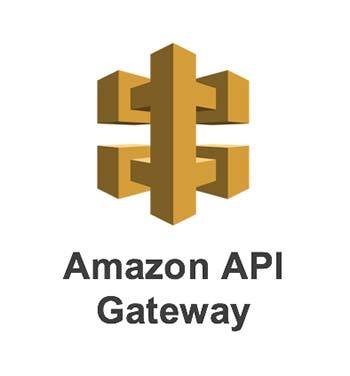
API Gateway creates RESTful APIs that:
Are HTTP-based.
Enable stateless client-server communication.
Implement standard HTTP methods such as GET, POST, PUT, PATCH, and DELETE.
API Gateway makes WebSocket APIs that:
Hold fast to the WebSocket convention, which empowers stateful, full-duplex correspondence among customers and servers.
Route incoming messages based on message content.
API Gateway handles all the errands associated with tolerating and preparing up to a huge number of simultaneous API calls, including traffic the board, CORS backing, approval, and access control, choking, observing, and API rendition the executives. API Gateway has no base charges or startup costs. You pay for the API calls you to get and the measure of information moved out and, with the API Gateway layered valuing model, you can diminish your expense as your API utilization scales.
API Types
RESTful APIs
Manufacture RESTful APIs improved for serverless remaining burdens and HTTP backends utilizing HTTP APIs. HTTP APIs are the most ideal decision for building APIs that just require API intermediary usefulness. On the off chance that your APIs require API intermediary usefulness and API the executive's highlight in a solitary arrangement, API Gateway likewise offers REST APIs.
WebSocket APIs
Manufacture continuous two-way correspondence applications, for example, visit applications and spilling dashboards, with WebSocket APIs. Programming interface Gateway keeps up a relentless association with handle message move between your backend administration and your customers.
Picking between HTTP APIs and REST APIs
HTTP APIs are intended for low-inactivity, financially savvy AWS Lambda intermediary, and HTTP intermediary APIs. HTTP APIs support OIDC and OAuth 2.0 approval and accompany worked in help for CORS and programmed organizations. Past age REST APIs right now offers more highlights and full command over API solicitations and reactions. The accompanying tables sum up highlights that are accessible in HTTP APIs and REST APIs.
The Architecture of API Gateway
The accompanying outline shows the API Gateway design.
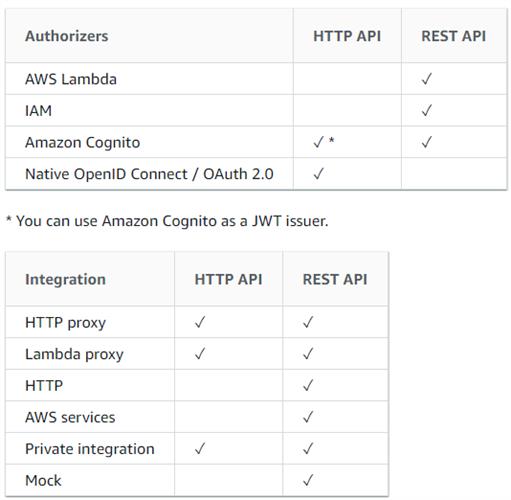
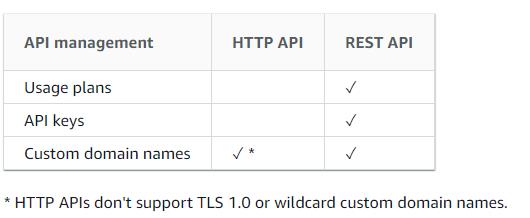
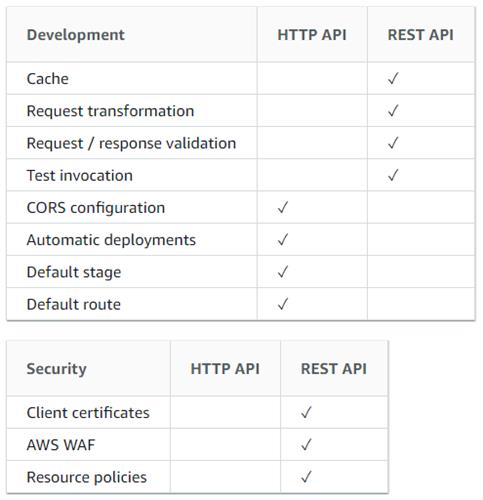
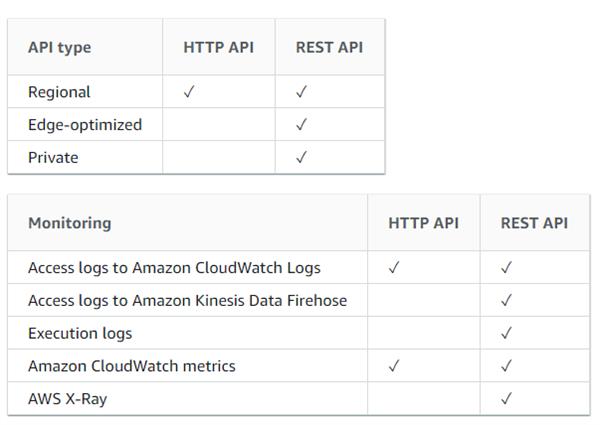
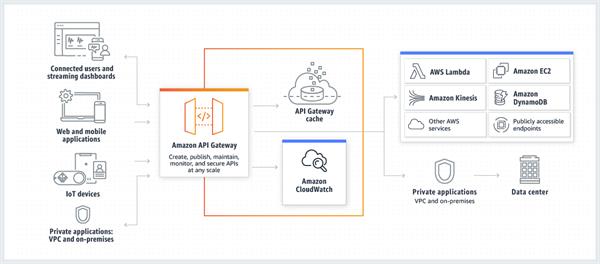
This outline represents how the APIs you work in Amazon API Gateway furnish you or your engineer clients with an incorporated and steady designer experience for building AWS serverless applications. Programming interface Gateway handles all the assignments associated with tolerating and preparing up to a huge number of simultaneous API calls. These undertakings incorporate traffic the executives, approval, and access control, observing, and API form the executives.
Programming interface Gateway goes about as a "front entryway" for applications to get to information, business rationale, or usefulness from your backend administrations, for example, outstanding burdens running on Amazon Elastic Compute Cloud (Amazon EC2), code running on AWS Lambda, any web application, or continuous correspondence applications.
Advantages
Productive API improvement
Run numerous variants of similar API at the same time with API Gateway, permitting you to rapidly emphasize, test, and discharge new forms. You pay for calls made to your APIs and information move out and there are no base charges or forthright responsibilities.
Execution at any scale
Give end clients the most minimal conceivable inertness for API solicitations and reactions by exploiting our worldwide system of edge areas utilizing Amazon CloudFront. Choke traffic and approve API calls to guarantee that backend tasks withstand traffic spikes and backend frameworks are not superfluously called.
Cost reserve funds at scale
API Gateway gives a layered evaluating model to API demands. With an API Requests cost as low as $0.90 per million solicitations at the most elevated level, you can diminish your expenses as your API use increments per area over your AWS accounts.
Simple observing
Screen execution measurements and data on API calls, information idleness, and blunder rates from the API Gateway dashboard, which permits you to outwardly screen calls to your services utilizing Amazon CloudWatch.
Adaptable security controls
Approve access to your APIs with AWS Identity and Access Management (IAM) and Amazon Cognito. In the event that you use OAuth tokens, API Gateway offers local OIDC and OAuth2 support. To help custom approval necessities, you can execute a Lambda authorizer from AWS Lambda.
RESTful API alternatives
Make RESTful APIs utilizing HTTP APIs or REST APIs. HTTP APIs are the most ideal approach to construct APIs for a larger part of utilization cases—they're up to 71% less expensive than REST APIs. In the event that your utilization case requires API intermediary usefulness and the board highlights in a solitary arrangement, you can utilize REST APIs.
Use case:
Use API Gateway to make HTTP APIs
HTTP APIs empower you to make RESTful APIs with lower latency and lower cost than REST APIs.
One can utilize HTTP APIs to send requests to AWS Lambda capacities or to any openly routable HTTP endpoint. For instance, you can make an HTTP API that coordinates with a Lambda work on the backend. At the point when a customer calls your API, API Gateway sends the solicitation to the Lambda capacity and returns the capacity's reaction to the customer.
HTTP APIs support OpenID Connect and OAuth 2.0 approval. They accompany built-in help for cross-origin resource sharing (CORS) and programmed organizations.
Use API Gateway to make REST APIs
An API Gateway REST API is comprised of resources and strategies. A resource is a sensible element that an application can access through a resource path. A strategy relates to a REST API demand that is presented by the client of your API and the response came back to the client.
For example,’ /earnings’ could be the way of an asset speaking to the salary of the application client. An asset can have at least one activity that is characterized by proper HTTP action words, for example, GET, POST, PUT, PATCH, and DELETE. A blend of a resource path and an activity distinguishes a strategy for the API. For instance, a POST/salary technique could include a pay earned by the guest and a GET/Cost strategy could inquire about the revealed costs brought about by the guest.
The application doesn't have to know where the mentioned information is stored and brought from on the backend. In API Gateway REST APIs, the frontend is encapsulated by method requests and method responses. The API interfaces with the backend by methods of integration requests and integration responses.
Let’s take an example, with DynamoDB as the backend, the API engineer sets up the integration request to advance the approaching strategy request to the picked backend. The arrangement incorporates determinations of fitting DynamoDB activity, required IAM job and approaches, and required information change. The backend restores the outcome to API Gateway as a combination reaction.
To course the joining reaction to a suitable strategy reaction (of a given HTTP status code) to the customer, you can arrange the mix reaction to outline reaction boundaries from integration to technique. You at that point interpret the yield information arrangement of the backend to that of the frontend, if important. API Gateway empowers you to characterize a composition or model for the payload to encourage setting up the body mapping layout.
API Gateway gives REST API the board usefulness, for example, the following:
Backing for producing SDKs and making API documentation utilizing API Gateway expansions to OpenAPI
Choking of HTTP demands
Use API Gateway to make WebSocket APIs
In a WebSocket API, the customer and the server can both send messages to one another whenever. Backend servers can without much of a stretch push information to associated clients and gadgets, maintaining a strategic distance from the need to execute complex surveying systems. For instance, you could assemble a serverless application utilizing an API Gateway WebSocket API and AWS Lambda to send and get messages to and from singular clients or gatherings of clients in a talk room. Or on the other hand, you could invoke backend services, for example, AWS Lambda, Amazon Kinesis, or an HTTP endpoint dependent on message content.
You can utilize API Gateway WebSocket APIs to assemble secure, real-time applications without provisioning or deal with any servers to oversee associations or huge scope information trades. Directed use cases incorporate constant applications, for example, the accompanying:
Talk applications
Continuous dashboards, for example, stock tickers
Continuous cautions and warnings
API Gateway gives WebSocket API the board usefulness, for example:
Checking and choking of connections and messages
Utilizing AWS X-Ray to follow messages as they travel through the APIs to backend services
Simple combination with HTTP/HTTPS endpoints
Who utilizes API Gateway?
There are two sorts of designers who use API Gateway: API engineers and application engineers.
An API engineer makes and conveys an API to empower the necessary usefulness in API Gateway. The API engineer must be an IAM client in the AWS account that possesses the API.
An application designer fabricates a working application to call AWS services by invoking a WebSocket or REST API made by an API engineer in API Gateway.
The application engineer is the client of the API designer. The application engineer doesn't have to have an AWS account, given that the API either doesn't require IAM consents or supports the approval of clients through outsider combined character suppliers upheld by Amazon Cognito user pool identity federation. Such an identity provider incorporates Amazon, Amazon Cognito user pools, Facebook, and Google.
Making and dealing with an API Gateway API
An API designer works with the API Gateway service segment for API the board, named API passage, to make, arrange, and send an API.
As an API designer, you can make and deal with an API by utilizing the API Gateway reassure, depicted in Getting started with Amazon API Gateway, or by calling the API references. There are a few different ways to call this API. They incorporate utilizing the AWS Command Line Interface (AWS CLI), or by utilizing an AWS SDK. What's more, you can empower API creation with AWS CloudFormation formats or (on account of REST APIs and HTTP APIs) Working with API Gateway expansions to OpenAPI.
For a rundown of Regions where API Gateway is accessible, just as the related control service endpoints, see Amazon API Gateway Endpoints and Quotas.
Calling an API Gateway API
An application designer works with the API Gateway service part for API execution, named execute-API, to summon an API that was made or conveyed in API Gateway. The fundamental programming substances are uncovered by the made API. There are a few different ways to call such an API. To find out additional, see Invoking a REST API in Amazon API Gateway and Invoking a WebSocket API.
This explains the construction and need of AWS API.If you have any doubts regarding the topic, write to me in the comment section. To read more informative articles on various topics stay connected with the TutorialsLink. Keep reading and stay healthy.





